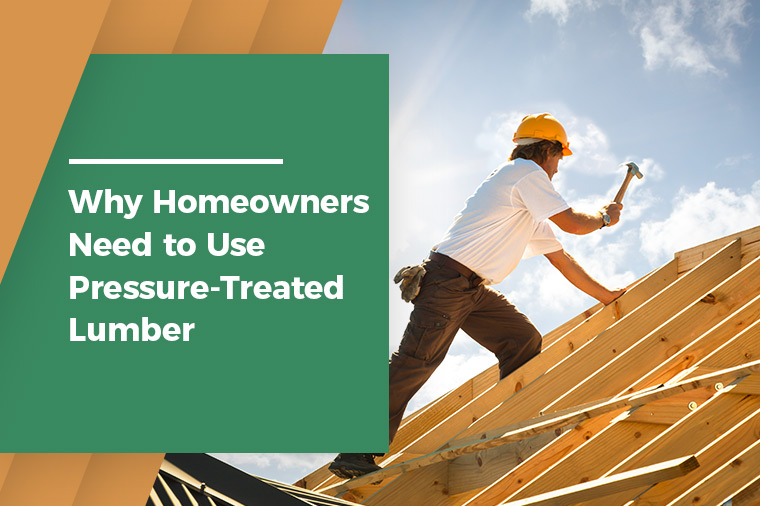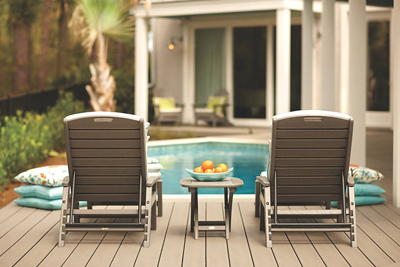Why Homeowners Need to Use Pressure-Treated Lumber

To All Our Valued Customers, Over the past few years, the Covid 19 Pandemic has forced us to adapt and change the way we do things on a day-to-day basis. Florida Lumber is no exception. To make sure that we remain strong and competitive in the market for the years to come, Florida Lumber has had to adjust and change our vision for the future. In the last 2 years, we have stopped selling Sheetrock and drywall products, roofing felt and roofing materials, and have even closed on Saturdays.
Over the last few months, we have been transitioning our way out of the door supply business so on August 31, 2022, our door shop will stop assembling doors. We will continue liquidating our doors from inventory until we are out of material.
Some customers have asked if we are closing or even moving locations. To set the story straight, we are not closing or selling the business and we are not moving. These changes are all part of our new vision and path to continue serving South Florida and increasing our footprint in the construction supply industry.
Our focus is going to be on Lumber, Construction Materials, Rebar Fabrication and Rebar Accessories. As we have liquidated some of the items that we don’t sell anymore we have created more space to buy a larger volume of our core items and pass on the savings to our customers.
In the next year you will start seeing changes that will help improve our ability to serve you, our customers. We appreciate your business and your patience as Florida Lumber’s new vision becomes reality.
A Todos Nuestros Valiosos Clientes En los ultimos anos, la pandemia de el Virus (Covid 19) nos ha forzado a adaptarnos y cambiar la forma de hacer cosas en el dia a dia. Florida Lumber no ha sido una excepcion.
Para asegurarnos de mantenernos fuertes y competitivos en el mercado en los anos venideros, Florida Lumber ha tenido que ajustar y cambiar nuestra vision para el futuro. En los dos ultimos anos hemos dejado de vender los productos de yeso (sheetrock), paneles de yeso (drywall), tela asfaltica (roofing felt), materiales de techo y cerramos los Sabados. En los ultimos meses, hemos estado en transicion para salir del negocio de suministro de puertas, en Agosto 31, del 2022 nuestra tienda de puertas dejara de construir y/o cortar puertas. Vamos a continuar liquidando nuestro inventario de puertas haste que terminemos todo el material. Algunos de nuestros clientes han preguntado si estamos cerrando o si nos estamos moviendo a otra localidad. La verdad es que no estamos cerrando, no estamos vendiendo y no estamos cambiando de localidad. Estos cambios son todos parte de nuestra nueva vision y camino a continuar sirviendo al estado sur de la Florida y incrementar nuestras huellas en la industria de suministros de construccion.
paneles de yeso (drywall), tela asfaltica (roofing felt), materiales de techo y cerramos los Sabados.
En los ultimos meses, hemos estado en transicion para salir del negocio de suministro de puertas, en Agosto 31, del 2022 nuestra tienda de puertas dejara de construir y/o cortar puertas.
Vamos a continuar liquidando nuestro inventario de puertas haste que terminemos todo el material. Algunos de nuestros clientes han preguntado si estamos cerrando o si nos estamos moviendo a otra localidad.
La verdad es que no estamos cerrando, no estamos vendiendo y no estamos cambiando de localidad. Estos cambios son todos parte de nuestra nueva vision y camino a continuar sirviendo al estado sur de la Florida y incrementar nuestras huellas en la industria de suministros de construcción.
2431 N.W. 20TH ST.
MIAMI, FL 33142
PHONE: (305) 635-6412
Sales Fax: (305) 633-4054
Accounting Fax: (305) 635-3723
Email: sales@tloridalumber.com

Traditionally, wood is invaluable material for building. However, it is sometimes prone to decay, which limits its usefulness in different applications. Moisture-prone environments encourage the growth of fungi and bacteria that harbor wood-boring insects. Different building materials like steel, aluminum, rock and concrete are also popular as an alternative to wood in hospital environments, but working with them is not simple and they are also quite expensive. To do away with natural wood limitations and increase their suitability for extreme environments, pressure-treated lumber is available. Application of intense pressure that infuses chemical compounds inside the grain and provides elemental protection is used in preparing the lumber for use in manufacturing.
It will also provide protection against pest infestation, fungal and bacterial growth. Pressure-treated lumber has more advantages as a building material when compared to natural wood. Here are some compelling reasons to use this as building material in your next project.
Moisture-resistant properties
Softening of natural wood in wet and moist environments is a rapid process, because it serves as a breeding ground for bacteria, fungus, and different types of microorganisms that decompose the wood slowly. When pressure-treated lumber is utilized, this doesn’t occur because it undergoes treatment with different chemicals based upon copper, the natural biocide. This protects it from attacks from different microorganisms. It becomes possible to use the treated lumber in different applications, such as decks that are exposed constantly to elements, support posts located in pier and docks that are constantly immersed in water and sill plates that rest upon potentially moist concrete.
Resistance to fungus
Fungus can grow even when there are only minimal amounts of moisture present in the wood. That initiates the decomposition process, which causes the wood to weaken and turn into food for other organisms, such as bacteria and different insects. Pressure treatment with the use of copper-based compounds like copper azole or copper quaternary will prevent the fungal growth. It is possible to use this in conjunction with other insect-resistant compounds. Even in constantly moist environments, you will be able to use treated lumber in settings such as basements and as buried posts.
Resistance to insects
In any wooden structure, carpenter ants and termites always pose a significant threat. They will bore inside the lumber easily, weakening it and ultimately leading to significant structural issues, especially when you have moist and exposed wood. Presence of copper compounds inside the pressure-treated variety prevents insect damage. Presence of chemicals like arsenic compounds or borate will discourage the insect activities further. When you use this type of lumber in the construction process in insect-prone areas, it serves to provide a barrier that protects the overall structure from damage. Even spiders and cockroaches will not be able to take residence within the structure.
Resistance to fire
Fire damage always remains a significant threat to wood structures. However, pressure treatment processes also introduce fire-retardant chemicals into the structure of the wood, making it resistant to any fire damage. Flame-retardant varieties are especially popular and near
Size variation available
Pressure-treated lumber comes in different sizes for use in different applications. For example, you can use the standard dimensional sizes -- such as 2x4, 2x10, and 2x6 – for building purposes. Different square cross-sections with dimensions such as 4x4 or 6x6 are available in addition to round cross-sections. You can use these for building piers, decks, utility poles, lighting posts or docks, to name just a few applications. Other uses include planking for siding, deck flooring and unique applications in various styles.
Cost factor
In comparison to the natural wood, the pressure-treated variety is expensive. However, it is worth the investment, as it provides resistance to insect damage, fungal growth, water and microorganisms. Steel, stone, concrete and aluminum is more expensive in comparison. This type of wood is also easy to install and use as needed. You can implement this in both outdoor and indoor locations without any problems, but other materials such as steel will undergo rapid corrosion in the absence of proper coating.
Simplicity of use
It is possible to cut lumber easily to the required size using saws. Fasteners such as nails penetrate the lumber quite easily and make it possible to use drills for boring holes inside wood. One can also use the openers for shaping the same. Pressure-treated lumber is also considerably lightweight when compared to steel, and as such, it is easy to maneuver when using special techniques for completion of projects such as lumber. Even someone with almost no experience will be able to use the pressure-treated lumber and build things quite quickly. This is a convenient and versatile building material for all types of projects, such as building decks, mailbox mounting and the creation of children’s outdoor play sets. Any structure built with pressure-treated lumber will be extremely durable.

